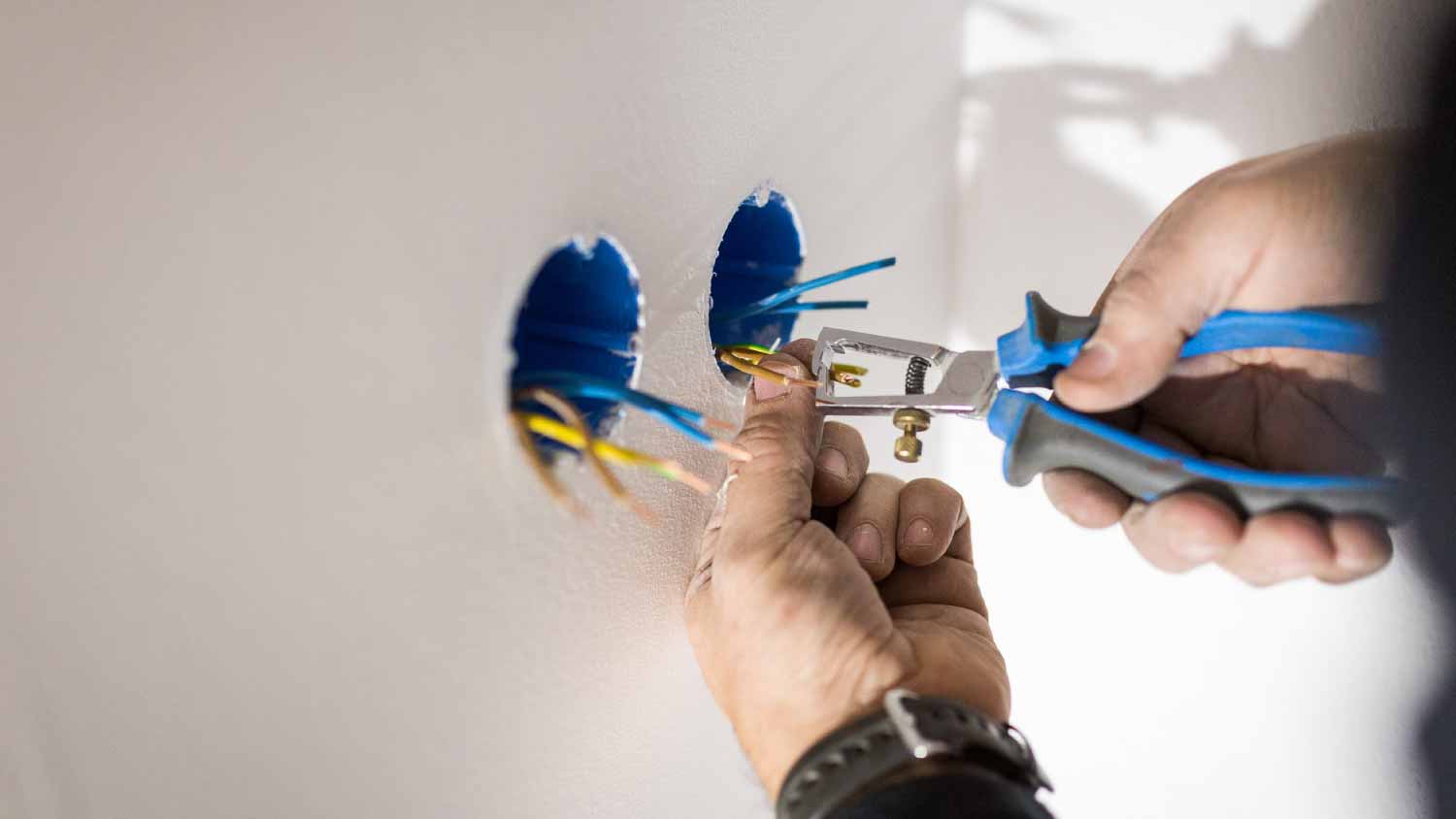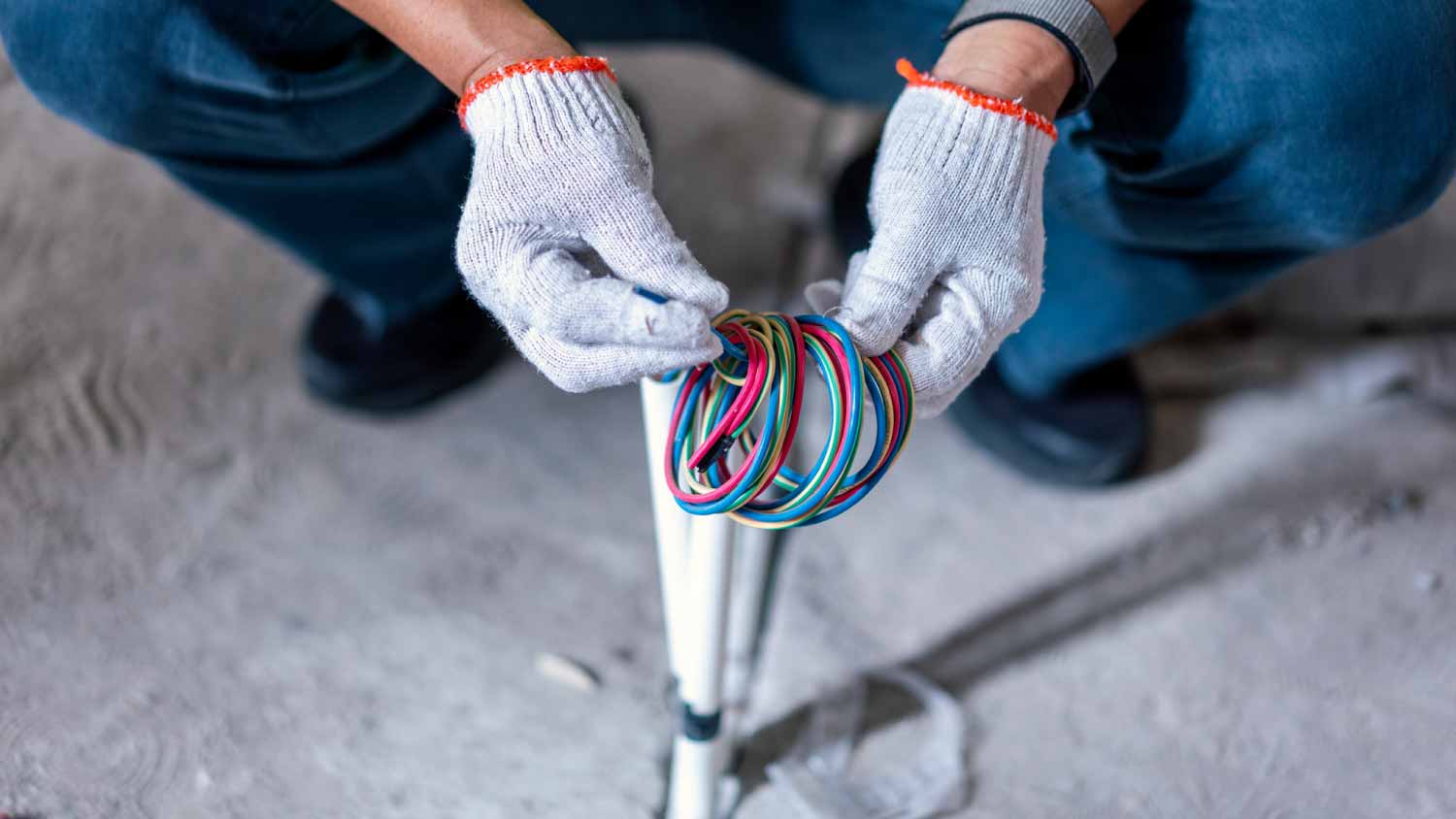
Discover the cost to replace asbestos siding, including key cost factors, and tips to help homeowners budget for safe and effective siding replacement.
Be extra cautious when inspecting wires for asbestos


Asbestos is a non-conductive material that resists fire, corrosion, and moisture.
It was commonly used in electrical wiring in the mid-20th century but has since been phased out.
You may suspect that the wiring in your home contains asbestos, but the only way to know for sure is through professional testing.
Asbestos was once a common material used in building components around the home, from wall insulation to wiring insulation. Consisting of various types of mineral fibers, asbestos can withstand high temperatures and resist fire, moisture, and corrosion. Since it's non-conductive, it was also commonly used to insulate electrical wires. If you think your home has asbestos wire, here's how to know for sure.

A visual inspection of the electrical wires in your home can give you a clue as to whether they contain asbestos or not. Electrical cables are typically wrapped in either a cloth or rubbery material. If asbestos is present, the wires may be wrapped in a black cloth that has a layer of white fibers underneath it.
Asbestos is friable, meaning it crumbles easily. If you're looking at the end of an electrical wire and the white fibrous material looks crumbly or fragile, it could very well be asbestos.
While a visual inspection can give you a hint about the contents of the material, it's by no means a definitive answer.
Another clue that the electrical wiring in your home contains asbestos is the age of the electrical system. The heyday for asbestos-containing building materials was in the mid-20th century. By the 1980s, use of asbestos was starting to drop off, due to bans and general awareness of the potential health concerns caused by inhalation of the materials.
If your home was built after the 1990s, it's very unlikely that any of your electrical wiring contains asbestos. However, if your home was built in the 1950s or 1960s, and the electrical system hasn't been updated, there is a likelihood that asbestos is present.
Due to its heat and fire resistance, asbestos wire was typically used in areas exposed to high temperatures. For example, the wiring to a lamp or overhead light could likely contain asbestos, as could wires that are located near a heater or boiler.

Electrical wiring that contains vermiculite may also contain asbestos. Vermiculite is a flaky mineral often used in insulation. It's not a type of asbestos, but for years, the main mine that provided vermiculite in the U.S. was contaminated with asbestos, meaning most vermiculite insulation was also contaminated with asbestos.
One of the most commonly used brands of vermiculite wire insulation was Zonolite. Other brands that could also contain asbestos include:
Gold Bond
Hy-Temp
Hi-Temp
Super 66
The only way to be 100% certain whether your wiring contains asbestos or not is to have it tested. Testing involves taking a sample of the suspicious material and examining it under a microscope.
You can't see asbestos fibers with the naked eye. Anyone looking for the fibers under a microscope needs to be trained to know what to look for, as well as on the proper way to use the microscope.
If you're concerned about the presence of asbestos wiring in your home, work with a local professional asbestos testing company. The testing company can safely take a sample of the material, then send it to a lab for analysis. You need to be careful when handling asbestos, as you don't want to disturb the fibers, and have them become airborne.
From average costs to expert advice, get all the answers you need to get your job done.

Discover the cost to replace asbestos siding, including key cost factors, and tips to help homeowners budget for safe and effective siding replacement.

Discover the cost to remove asbestos siding, including average prices, key cost factors, and tips to help homeowners plan a safe and budget-friendly project.

The cost of asbestos testing varies based on location, property size, test type, and other factors. Here’s a breakdown of the costs to conduct an asbestos survey.

If you believe you have black mastic asbestos in your home, do not disturb it. Reach out to a professional for help with testing and removal.

Are you worried there is asbestos in lath and plaster walls in your home? Keep reading to learn why this building material is so dangerous and how to find it.

The significant risk of asbestos in homes must be attended to, which means knowing who to call for asbestos removal. Here's how to hire the best professional.